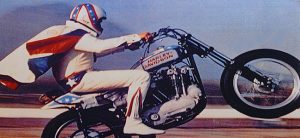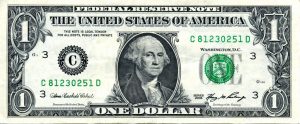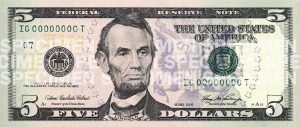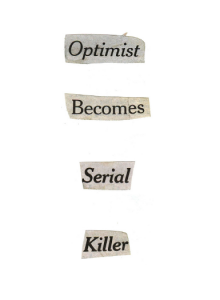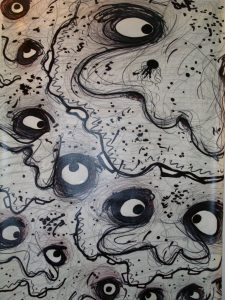
I was never meant for this nocturnal stage, this sickening sabbat spun out of control. I am a creature of the daytime, engineered to delight housewives, to charm the Oprah-fed minions with my engaging deformity. Only through cunning have I insinuated my way here, become part of your “Super Bowl” as you so reverently and ridiculously call it.
I am one of a thousand apparitions passing by you tonight. Commercials, you call us. Crafted mendacities, million-dollar playlets evil in our intent: to hoodwink, unsettle, connive. Here, at this foul pageant, we assemble: sneakered slam-dunking giants, soda-crazed polar bears, alcoholic frogs, interrupting bunnies, all of us. Each year the festival swells, growing more bloated; each year we revel in sheer glorious excess.
But I care nothing for your spectacle. If possible, I would hide my hideousness from all of you. No, I have journeyed here for a reason.
Revenge against Gittis, the smug adman from whose feeble mind my monstrosity sprang. Tonight, like his partner before him, he shall die at my hand.
I am a grotesque, a wan sea anemone-like appendage with fingers sprouting skyward in a gross Gorgonian parody. My mouth, frozen in a carved smile, is a tight slit, a puckered gash. Anchored beneath my middle digits, under slanted brows, are two black, pupil-less eyes that burn with unmitigated hate. Most humiliating of all is the red bulbous clown nose-no doubt a snickering afterthought-planted solidly in the center of my palm.
I am the Hamburger Helper Helping Hand. A minor deity, but surely you have seen me. Among certain demographics I am quite popular.
I was born to sell, to dance and sing in degrading productions, to peddle carton after carton of noddle mix, a pandering, pathetic oaf.
For this I have Gittis to thank. Smug, preening Gittis, master hack, the bane of my existence. I was born in the ruts of his imagination, conjured without regard, as if my life were but a trifling amusement. DeFozio-his partner, his art director, the pony-tailed poser who sat snickering as I took my first timid steps at the animation house. . .
At first, I was cast in the image of a human hand. I had five svelte digits. My eyes were ripe, happy. Then Gittis, that blundering philistine, took up his sketchpad.
With the sickening godliness so typical of his profession, he changed me, engineered me into what he thought I should be. Gittis amputated my pinky and plumped my remaining fingers until they resembled four fat phalli. He hacked out a mouth, stuck on a schnozz, and soon I was a beady-eyed claw suitable only for derision. Gittis smiled. DeFozio smiled. Even Whitslaw, their client from General Mills, smiled. After McGee the media planner figured my demographics, I was ready for the airwaves.
My inaugural performance ran during Days of Our Lives. I waddled before my co-stars, a wide-eyed domestic and her two foolish offspring, who marveled as I sang “Hamburger Helper helps your hamburger” in my cartoon voice, and packed their faces with fatty noodle.
As the years passed, the campaign turned more humiliating. Gittis swaddled me in ponchos, stuck a mustache on my lip, assigned stereotypical ethnic guises to hasten the sale of spin-off products like Hamburger Helper Beef Taco and Zesty Italian, even-I gag-Tuna Helper. My rage grew, and I sank further into self-loathing.
Then one day, enlightenment. I looked at the beings around me, the M&Ms, Toilet Ducks, and morphing Lifesavers, and I realized none of us were here by choice; we all existed through some grand, infernal design. We were not to blame for our fates; we were only pawns, automatons controlled by multinational forces. Slowly, over time, my anger shifted from myself to the race of men who had ushered me into this foul life. I resolved to strike back.
But only when I closed my eyes and saw his accursed face-that fat chin and set jaw-did I know the target of my rage.
Gittis.
In the land of image there is no substance. We flit about, spirits riding static skies, dashing from one porthole to the next in the billion-screened Panopticon surrounding all things. We glare at your world, at your sedentary hell.
Each day I saw you; each day it was the same. Your families sitting mesmerized, sunk into couches. Your bleary eyes, glazed with obsequiousness. I saw you suckle the glass teat and slurp its banal milk; I saw you feed at the electric trough. I saw it all, and I hated you for your weakness.
The more I hated the more my powers grew. With each pathetic human I saw, another part of me strengthened, another limb tightened, until I pulsed, throbbing with energy. I knew then that your photon shackles could never hold me. Already I could feel myself loosening. It was only a matter of time.
As my powers mounted, I hunted Gittis, confident that the sight of him would spring me from my electronic prison. I searched, all the while plotting his demise, with no success. Then one day I found not Gittis, but his partner in crime, DeFozio, snoozing on a sofa, surrounded by snotted, balled-up tissue! Somehow, I’d stumbled onto him.
Fury rose until it seemed I would explode. And in the full force of my rage, I hurled myself from the phosphorescent sea. (My presence would not be missed-I had fifteen seconds until my next on-camera shot.) I landed on DeFozio’s sofa. Stealthily, so as not to arouse him, I scaled a nearby shelf, where I seized a heavy gold figuring: his precious Clio statue. Seconds later I loomed over him.
“With this foul trophy, I defile you!” I screamed, echoing the late night gladiator epics I’d seen on WGN. Before he could stir, I smashed the Clio into his brow. He kicked and flailed; I struck again and again, blind-mad, and finally, after a last penetrating blow, he moved no more. I dropped the Clio on the floor.
“Best Consumer Package Goods: Hamburger Helper-1993,” it read.
I dove back to the screen, howling with delight.
Gittis though, proved an elusive foe. For months I searched, gazing into your living rooms and bedrooms, your squalid apartments and rotted duplexes, every crutch where humanity dwelled. I scanned the vast arena of faces, but not once did I see him.
Then I realized the root of my failure: I only ran during the day. For me to find Gittis, he would have to watch daytime television, an impossible scenario given the office duties required by his conniving craft. As long as I aired during mornings and afternoons, I would never find him. I n fact, the only reason I’d found DeFozio was because he had called in sick! I considered waiting for Gittis to fall ill, but left that for a more dastardly solution.
I reasoned that if Gittis would not come to me, I would come to him. But how? Despite my ability to shuttle between realities, I could not break free from the chains which bound me to specific programming-the brainless reruns and soaps McGee had figured. To find Gittis I had to deliver myself to another program, one during the nighttime.
But which one? Seinfeld? SeaQuest? And how would I know he’d be there? The only solution was to pinpoint the precise show he’d be watching. I racked my brain, but only as the foul event drew nearer and I heard others of my kind discussing it like some vile prom they hoped to attend, did I realize where I’d find him.
The Super Bowl! That shitstorm of media hype and chip-crunching idiocy! Yes! Of course Gittis would be watching-as an adman the event was sacred to him!
But there was only one more hurdle: how would I , a lowly package goods creature, reach that lofty stage? The only way was through a subversion of the Hamburger Helper media plan, the document that determined my placement on the networks. I would have to find and alter it, no easy task since I knew nothing of the intricate schedules.
No, some flunky must do the deed. I knew instantly who. McGee-the media man who sold me to the airwaves. Quickly, I concocted a plan:
I was fortunate enough to recall that on occasion, McGee left a television set on in his office, to be lulled by its soothing blather as he went about his figuring. All I had to do was wait until the set came on, and hope no one saw me.
When it did, I leaped forth, ducked a secretary, and rifled through the papers atop McGee’s desk. Hurriedly, I scrawled a note:
Bob-
What about Ham Helper on the Super Bowl? Lots of single men will be watching.
-S.W.
“S.W.,” of course, referred to none other than Stanley Whitslaw, the General Mills client for whom McGee, Gittis, and DeFozio worked. I knew that McGee, like all agency drones, would do anything to appease the whims of his queen bee client. He immediately wrote the plan, and bureaucracy did the rest. No one changed it, n one questioned it, the whole deal went undetected.
All that remained was the grisly denouement.
So here I am, on this vast, limitless plane, this shimmering vale of static and light, this mediated Elysia.
Clearly, I do not belong in this august assemblage. The creatures here are different from me: they are icons, slick celebrities, super-athletes and techno animations, beings of pure image. My deformity is a throwback, a reminder of simpler, less manic times. Now it is all ego and showmanship, mirror and smoke, glitter and braggadocio: chip-dipping politicos, sky surfers, beer bottles with tiny football helmets rammed onto their necks . . . it is insane. What have you done?
We straggle on. One by one we reach the stage, acting our splashy dramas. After the Bud bottles it is to be my turn.
Shaq dunks. A chimp swills cola. Innocuous young people bond inexplicably over a malted beverage called Zima. The bottles stage their contest; an announcer speaks, a log rises. I scuttle forward, my heart soaring.
Metallic rays splinter into tubes of gray and gray-blue and I take the stage, all of America gazing upon me.
“Have I got a meal for you!” I sing, over the homey hamburger theme.
Then I see that fat chin, and pounce.
-As published in The Baffler.



